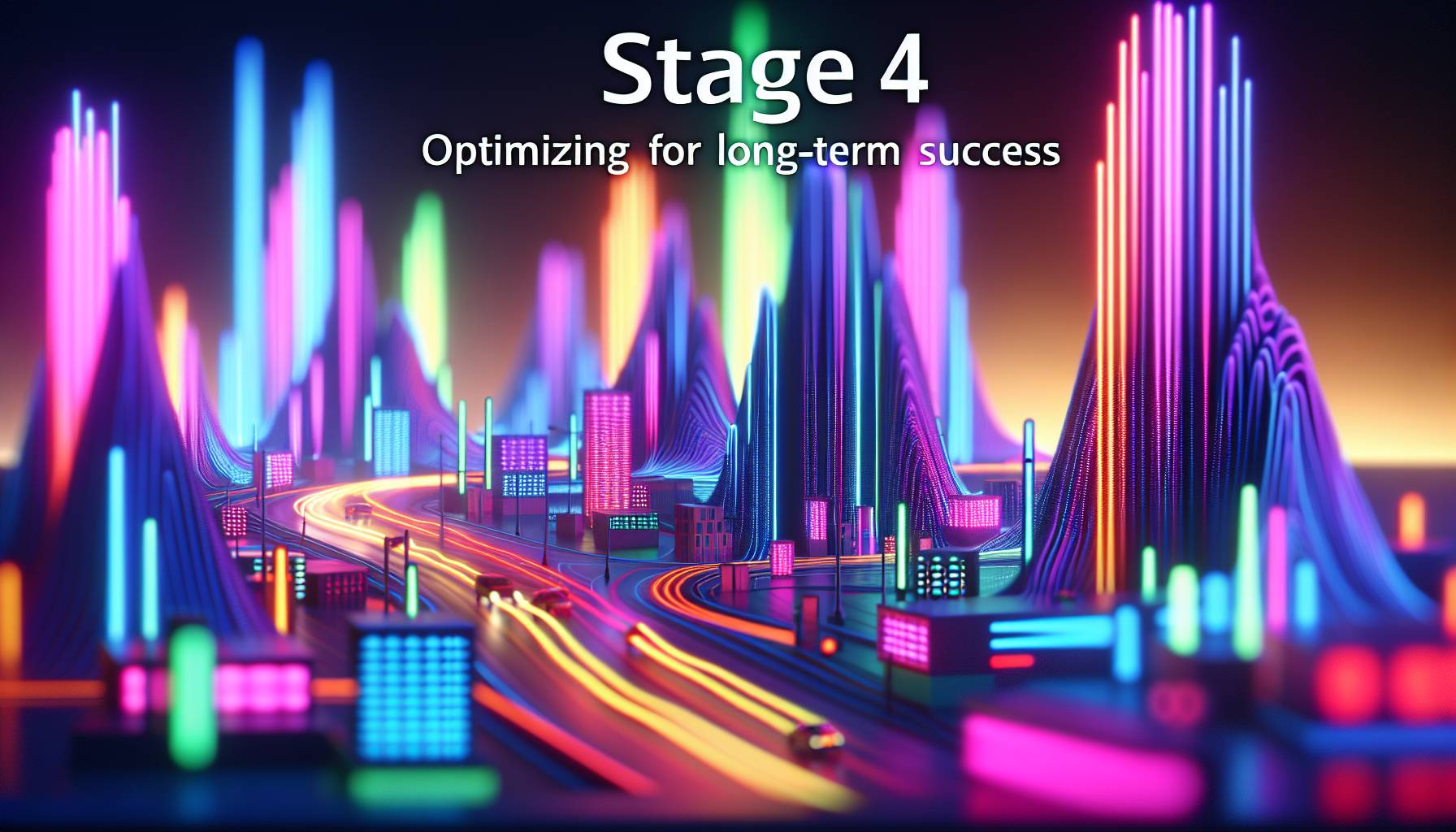Understanding the Online Growth Landscape

We’re all guilty of falling in love with the idea of a full sales pipeline, online success, and growth. Having someone tell us that we’ll achieve it by a certain time is relatively alluring. It’s not hard to see why we often get carried away by marketing promises and vague strategies.
When you think of growing your business online, your mind probably goes straight to setting up some ads, offering the lowest price around, or seeing what your competition is up to and mimicking that. And this is your cue to grab all those thoughts and put them in a box labelled “actions that seem like a good idea but don’t really hold up. ” The digital industry is complex and layered; growing in it requires equal parts understanding and action.
It would perhaps surprise you how many businesses have found exponential success by simply understanding the current landscape - across industries. Now more than ever, businesses that focus on short-term activities alone are hardly ever being left behind or stalling at one stage of their journey instead of continuing to grow. There is little value in doubling down on ads when you’re unclear about when, how, and where to leverage them for business growth. Sort of.
This is also when knowing the different stages of online growth becomes crucial. Not only do they provide context to where you’re at today but also where you want to be and how you can supposedly get there.
Stage 1: Establishing Your Online Presence

It seems like i expect social media marketing is a relatively recent innovation. Still, if you plan on making a name for yourself, it's essential, especially as an influencer. In the first stage of online growth as an influencer, you need to start planning the content you want to create and establish your online presence by having a concrete idea of how you wish to present yourself to the world.
Stage one is where it all begins—picking a unique brand name and logo that sets you apart from your competitors. In addition, you need to focus on building brand awareness by having an effective posting schedule and sticking to it without fail. This is also where you decide the type of content you'll be creating, whether it's Instagram reels or TikTok videos, and how much time will be dedicated to each channel. But that's not all; while it's important to stay unique and distinctive as an influencer, it's also important to make your content accessible.
This means adding subtitles and alt text on your images so that people who are deaf, hard of hearing, blind or visually impaired can also access your information and stay updated about all things relevant in your industry. In the first stage, you also begin researching your target audience and creating engaging content for them specifically.
The content begins more informational at this point rather than promoting any products or services, but once you have built an audience in that stage then you can consider introducing paid partnerships with brands that align with your values.
Stage 2: Building Audience Engagement

You know the feeling. Hitting ‘post’ on your latest content and… nothing. Just a big empty echo chamber where interaction was meant to be.
Building an engaged audience is about so much more than tallying up impressive follower counts. It’s about making people care - enough to double-tap, enough to DM, enough to keep coming back.
The big thing that separates forgettable brands from magnetic ones is that sense of community and trust. When you show up with some transparency, your people relate more easily - and when they see you cheer for customers, followers or even other industry players, it feels genuine instead of competitive or self-centred. This can mean behind-the-scenes content (even if it’s chaos), conversations that invite your audience to weigh in, and sharing small business moments that aren’t all glossy perfection.
The bigger the platform, the harder it becomes to fake humanity - so if you’re growing at a cracking pace, you might have to scale this with dedicated hours or team members. I’ve seen this go both ways: a fiercely loyal audience can build an almost cult-like obsession with a brand that stands for something meaningful. But I’ve also seen things get sticky when it becomes hard to sustain engagement as things scale quickly. The long-term view should always be about building relationships, not fads.
For beginners who are taking their first few steps beyond Stage 1 - Launching Their Brand Online - Stage 2 is presumably about slow growth and deeper connections rather than rapid surges in following numbers. It’s the solid foundation on which you’ll build loyalty over time.
Stage 3: Scaling Your Operations

It’s that strange moment when you feel a bit like you’ve found the cheat code to growing your business online. Suddenly, there’s an abundance of success and you can a bit feel yourself getting comfortable. In fact, not only are things running as smoothly as ever but it almost seems as if nothing can go wrong - confidence is oozing out of you and slowly, more often than not, you start stepping back and letting your team run the show. Once you’ve reached this point, though, it’s essential to understand that now is when the real fun begins.
It’s time to get ready to scale up. Here is where it becomes especially important that your brand has a unified voice that cuts through the noise of everything else in the market. You’ll want to invest in specialists who will understand how your brand voice should be scaled even further, while also providing new perspectives on how to take things forward in the future. The key here is finding experts who have the right focus and mindset - people who will care about scaling growth without losing sight of core values at every stage.
I often find myself hesitating at this stage because I’d have put so much energy into finding the right people to set up solid foundations earlier on in my journey. However, this was when I needed to remind myself that it’s not about replacing core team members - instead, it's time for building special units so everyone can focus on what they do best. In short - or long depending on how you look at it - scaling up online is rarely possible in many ways but what matters most is finding your rhythm and being true to your brand identity along the way. It might seem daunting but there’s incredible power in doing things step by step.
And while immediate growth can work for some businesses depending on what they’re offering customers, slow growth has been found to be more sustainable over time.
Stage 4: Optimizing for Long-Term Success

I Assume stage four, it can feel like the most important stage of all. You’ve worked so hard to get to this point and you’d be silly to throw it all away by slipping back into bad habits or ignoring the things you’ve learnt. The growth phase was a great learning curve for you and your business, this phase is about making sure you keep that momentum going.
There are things you can do to make sure your business keeps running like a well-oiled machine. Create good habits and stick to them. You want to ensure your site is regularly maintained, that your marketing efforts don’t go cold, and that your customer service continues at a high standard.
All the things you worked so hard for in stage 3 should be continued and enhanced even further. I think it’s important to know when you need help too. Don’t be afraid to ask for help or invest in help if you’re able to.
There are people out there who specialise in website maintenance, marketing, and sales, if it’s not your forte let someone else take care of it. Not only does this improve your website long-term but it also gives you time back for yourself. More or less. Finding what works for you and your business is key to keeping everything ticking over seamlessly while also growing steadily and keeping things optimised so your business has every opportunity for success long-term.
Key Metrics to Measure Your Growth

We all know that feeling when you put some effort into something and there are no signs of improvement. The frustration, anxiety, and eventual loss of motivation can pretty much push you away from trying again. Suggests That when you're starting a business, it is very common to get overwhelmed by the flow of attention it demands.
There may be times when you're treading water and there seems to be no way out. This is why it is important that you analyse your work in a set period of time so that you stay motivated and you have concrete goals to work towards. Once you've realised this and want to start working on the analysis part of your business, it's crucial that you know what metrics to measure.
You won't be able to see any growth if you don't measure the right things. The way I see it, before anything else, it is important that you take a step back and decide what success means for your business. Then, define your priorities for a set period of time and how you'll quantify them.
For example, if creating brand awareness is your first goal, measuring social media engagement can help you understand what areas you're doing well in and which ones need more work. Some other metrics that can help you measure your online growth are social media engagement like likes, shares, comments, etc. You can also track website traffic that comes from each platform so you'll know where to focus more on promotional efforts in order to convert viewers into paying customers. If you're focusing on building a community around your brand, you should look at engagement metrics and how much people are arguably resonating with your messaging by measuring engagement rates.
It can somewhat be easy to go down the rabbit hole with numbers but don't let the pursuit for perfection stop you from showing up.


